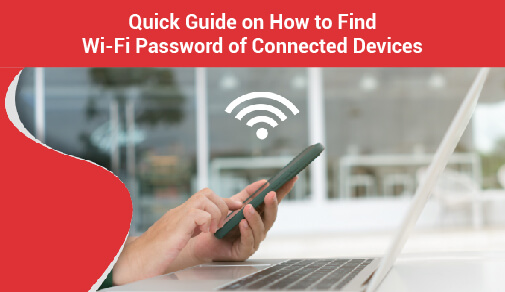Best Wifi Signal
-
0
-
-
10 minutes

How often does it happen that people, despite having a fast, high-speed internet connection, have a horrendous experience when using the internet, even for simple tasks like browsing the web?
A lot of people face this issue. Most people believe that the problem is with the internet connection, and without giving it any second thought, they call their Internet Service Provider (ISP) to complain about the issue.
The technical guy comes home, checks the connection, and then says that there is nothing wrong with the internet connection. The problem is actually with their router!
Now, people think that the router is fine. After all, they have just bought a new WiFi 6 router. But the truth is that where they place the router plays a crucial role in the quality of their internet connection.
If placed incorrectly, even the best WiFi router can give poor results.
This blog post is all about how to place the router and get the best WiFi signal possible to have a smooth experience while using the internet.
Importance of Having a Good WiFi Signal
It is a no-brainer that having a good WiFi signal is important for an uninterrupted internet connection. Here is a look at some of the use cases that explain the importance of having a good WiFi signal:
Work
Nowadays, most people have a work-from-home setup, which means that they need to have a good WiFi signal to remain connected to the office. If their connection is slow and unstable, it will be difficult for them to perform their daily tasks, such as video conferencing and file sharing. This can have a negative impact on their performance.
Business Productivity
Faster internet speeds can improve workflow and productivity, which can ultimately lead to more business growth. So, having a good WiFi signal is essential for any business that wants to stay competitive and be successful. For instance, individuals can get more work done in a short amount of time with the help of a good WiFi signal.
Education
Thanks to the pandemic, online learning has become the new normal. Students need to have a good WiFi connection in order to participate in their online classes, and research projects using online resources, complete their assignments, and even prepare for competitive exams. Without a stable connection, it will be difficult for them to learn effectively.
Entertainment
Streaming services require strong WiFi networks to provide a seamless experience. This is especially important for 4K streaming and online gaming, where there can be lag or buffering if the connection is not strong enough.
Personal Use
Finally, having a good WiFi signal is important for day-to-day activities such as browsing the web, using social media, and checking emails. It can also help with online shopping, home automation, and other tasks that need a stable connection.
Different Types of Routers and Their Features
One of the most important aspects of having a good WiFi signal is the type of router people are using. There are different types of routers available on the market. The latest versions are WiFi 5 and WiFi 6. Each of these router versions has different features and capabilities that can affect the WiFi signal.
Here is a look at the latest and upcoming WiFi routers and their features:
WiFi 5
· Released in 2014
· IEEE standard - IEEE 802.11ac
· Frequency Band - 5 GHz
· Theoretical maximum speed - 6.9 Gbps
· Uses MU-MiMO technology that allows faster data transfer from up to 4 users
· Efficient than WiFi 4
WiFi 5 routers are a good choice for people who have a low budget and less number of devices that are going to be connected to the network. They are suitable for most everyday activities, such as web browsing, streaming low-quality videos, and casual gaming.
WiFi 6
· Latest WiFi technology
· IEEE standard - IEEE 802.11ax
· Introduced in 2019
· Provides theoretical data rates of up to 9.6 Gbps
· Operates on the 2.4 GHz and 5 GHz frequency bands
· Introduces OFDMA (orthogonal frequency division multiple access) technology for improved efficiency in handling multiple devices
· The router now supports more devices
· Enhanced safety protocols
· Target Wake Time feature that improves the battery life of the devices connected by automatically switching them off when they are not in use
WiFi 6 routers are the best option for households that demand the highest level of WiFi performance and need to support a large number of connected devices. They are ideal for demanding applications, such as 4K video streaming, online gaming, and virtual reality.
WiFi 7
· Seventh-generation WiFi technology (in development)
· Expected to provide data rates of up to 40 Gbps
· IEEE standard - IEEE 802.11be
· Will operate on the 2.4 GHz, 5 GHz, and 6 GHz frequency bands
· Expected to introduce additional technologies for improved performance and efficiency
· Multilink capabilities
· Flexible channel utilisation
· Enhanced privacy and security than WiFi 6
In the future, whenever WiFi 7 is released, it will be the best choice for people who want the highest level of performance and need to support a large number of connected devices. But, as with any technology, it is best to wait for more information and see how the technology develops and is adopted by the market.
That being said; currently, the WiFi 6 router is the best option for people who need a strong and stable connection. It offers the fastest speeds and has some great features that can help people get the most out of their WiFi setup. Here are some best WiFi router options available on Amazon and Flipkart.
Factors Affecting WiFi Signal Strength
As mentioned earlier, just having a good router isn't enough. Several factors can affect the strength of the WiFi signal and result in a weak or unstable connection.
Here are some of the most common factors:
Distance From the Router
The further the user is from the router, the weaker the signal will be. This is especially true for WiFi 5 and 6 routers, as they operate on higher frequencies that are more easily obstructed by walls and other obstacles.
Interference from Other Devices
The strength of the WiFi signal can be affected by other devices, such as cordless phones, microwaves, baby monitors, and other electronic devices that operate on the same frequency range as the router.
Obstacles
Physical obstructions, such as walls, floors, doors, furniture, and other materials, can affect signal strength. The thicker or denser the material is, the more it will hinder the signal.
Router Placement Tips
To get the best WiFi signal from the WiFi router, here are some tips to bear in mind:
Place the Router in a Central Location
Placing the WiFi router in the central location of the house is a great way to improve the WiFi signal strength and coverage. By placing the router in the middle of the home, the WiFi signal can most probably reach all corners of the house (depending upon the size of the house) without being obstructed by walls or other obstacles. This will ensure that all devices can connect to the internet with a strong and stable WiFi signal, providing a seamless online experience.
Avoid Obstacles in the House
When setting up the WiFi router, it's important to avoid obstacles that can interfere with the WiFi signal. Walls, floors, and other electronics can weaken the WiFi signal and reduce its range. It's best to place the router on a flat surface, such as a table or shelf, and away from other electronics, such as TVs, speakers, and cordless phones.
Keep the Router at a Height
Placing the WiFi router at a high elevation can significantly improve signal strength and coverage. By positioning the router at a higher location, such as on top of a shelf or a cabinet, the WiFi signal can reach a larger area without being blocked by obstacles such as furniture, walls, or floors.
A high placement also reduces the chance of signal interference from other electronics in your home. So, if you want to optimize your WiFi signal coverage, consider placing the router at a higher elevation for maximum performance.
Use Directional Antennas
Lastly, using directional antennas is an effective way to improve WiFi signal strength and coverage. Directional antennas can be positioned to focus the WiFi signal in a specific direction, which can be useful in situations where users need to extend the signal to a specific area or room.
For instance, in the case of a large house with multiple floors, directional antennas can be used to direct the WiFi signal to the upper floors. It's important to note that directional antennas have a limited coverage area, so it's crucial to position them correctly to achieve the best results.
Alternative Placement Options
If all of the above-mentioned methods fail to improve the WiFi signal strength and coverage, users may want to explore other placement options. These include:
WiFi Range Extenders
WiFi range extenders are an alternative router placement option that can help to extend the WiFi signal coverage in the home. Range extenders work by picking up the existing WiFi signal from the router and then rebroadcasting it, effectively extending the signal range. This is particularly useful if individuals have a large house or if there are thick walls or other obstacles that interfere with the WiFi signal.
WiFi range extenders are also a great solution for outdoor areas, such as a backyard or patio, where the WiFi signal may not reach. However, it's important to note that range extenders can also introduce a slight delay in the signal, so they are not ideal for online gaming or other activities that require a low-latency connection.
Mesh WiFi Systems
Mesh WiFi systems are another alternative router placement option that can significantly improve the WiFi signal coverage in your home. Unlike traditional WiFi routers or range extenders, mesh WiFi systems consist of multiple access points, or nodes, that work together to create a seamless WiFi network. The nodes communicate with each other to ensure that the WiFi signal is strong and reliable throughout your home.
Mesh WiFi systems are particularly useful for larger homes or multi-story buildings, where a single router may not be able to provide sufficient coverage. They are also ideal for households with many connected devices, as they can handle a high volume of traffic without slowing down.
Powerline Adapters
Lastly, powerline adapters can extend the WiFi signal coverage without the need for additional cables or equipment. Powerline adapters work by using the existing electrical wiring in the home to create a network connection. One adapter is connected to the router via an Ethernet cable and plugged into a power outlet, while another adapter is plugged into a power outlet in a different area of the home. The two adapters communicate with each other over the electrical wiring to transmit the WiFi signal.
Powerline adapters are a great solution for homes with thick walls or other obstacles that may interfere with the WiFi signal or in situations where running Ethernet cables is not practical. However, it's important to note that the effectiveness of powerline adapters can vary depending on the quality of the electrical wiring, so it may not be the best choice for all homes.
Conclusion
Finding the best positioning for your WiFi router or access point can be challenging, but it is an important factor in ensuring a reliable and strong WiFi signal throughout the home. Fortunately, there are a variety of options available to help improve the WiFi signal coverage in any environment, whether it's a one-room studio apartment or a multi-story house.
From traditional routers and range extenders to mesh WiFi systems and powerline adapters, there are plenty of solutions to choose from. With the right router placement and a little bit of research, users can create an optimized WiFi network for their homes.
To get the best out of their WiFi router and have a seamless internet experience, users need to have a fast and reliable internet connection. ACT offers a variety of broadband plans to ensure users get the best bang for their buck. With high-speed internet plans from ACT, users can enjoy online gaming, streaming movies and music, video calling, and more without any interruptions. Sign up for an ACT broadband plan today for the best internet experience! Contact us now to get started.







